Going Public – Part Two
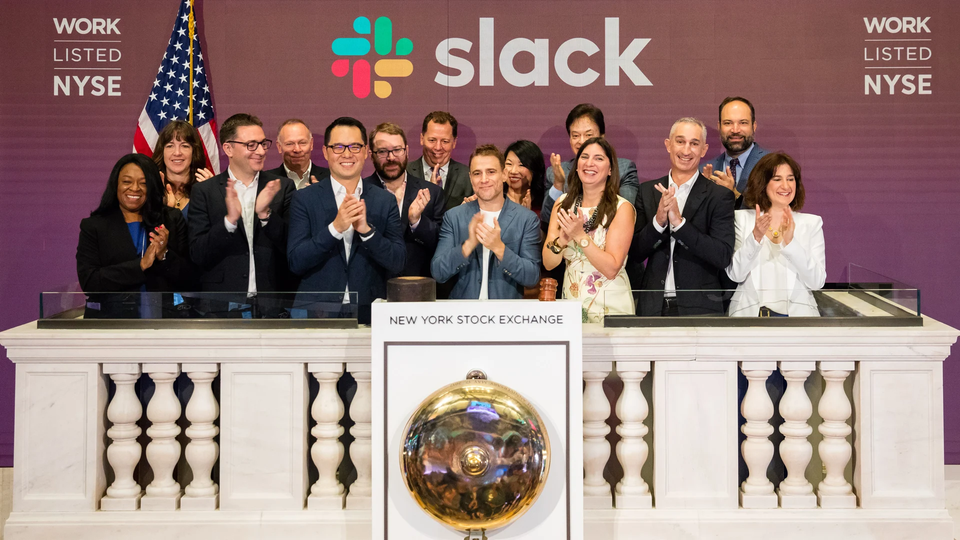
“Starting three years ago, we started trying to run Slack as a public company. We have been building toward this for a long time.” Stewart Butterfield had just rung the bell at the NYSE, signaling the ceremonial start of trading for our freshly minted stock. It was June 20th, 2019. The day had finally arrived.
The floor of the New York Stock Exchange is no longer crowded with traders frantically shouting and jostling. But this morning it was busy. Stewart, Cal and our CFO Allen Shim were the center of attention. They took interviews with media and shook hands as they were guided through the scrum by NYSE officials. They wove their way toward the podium through the towering banks of screens and trade desks, followed by cameras and journalists.
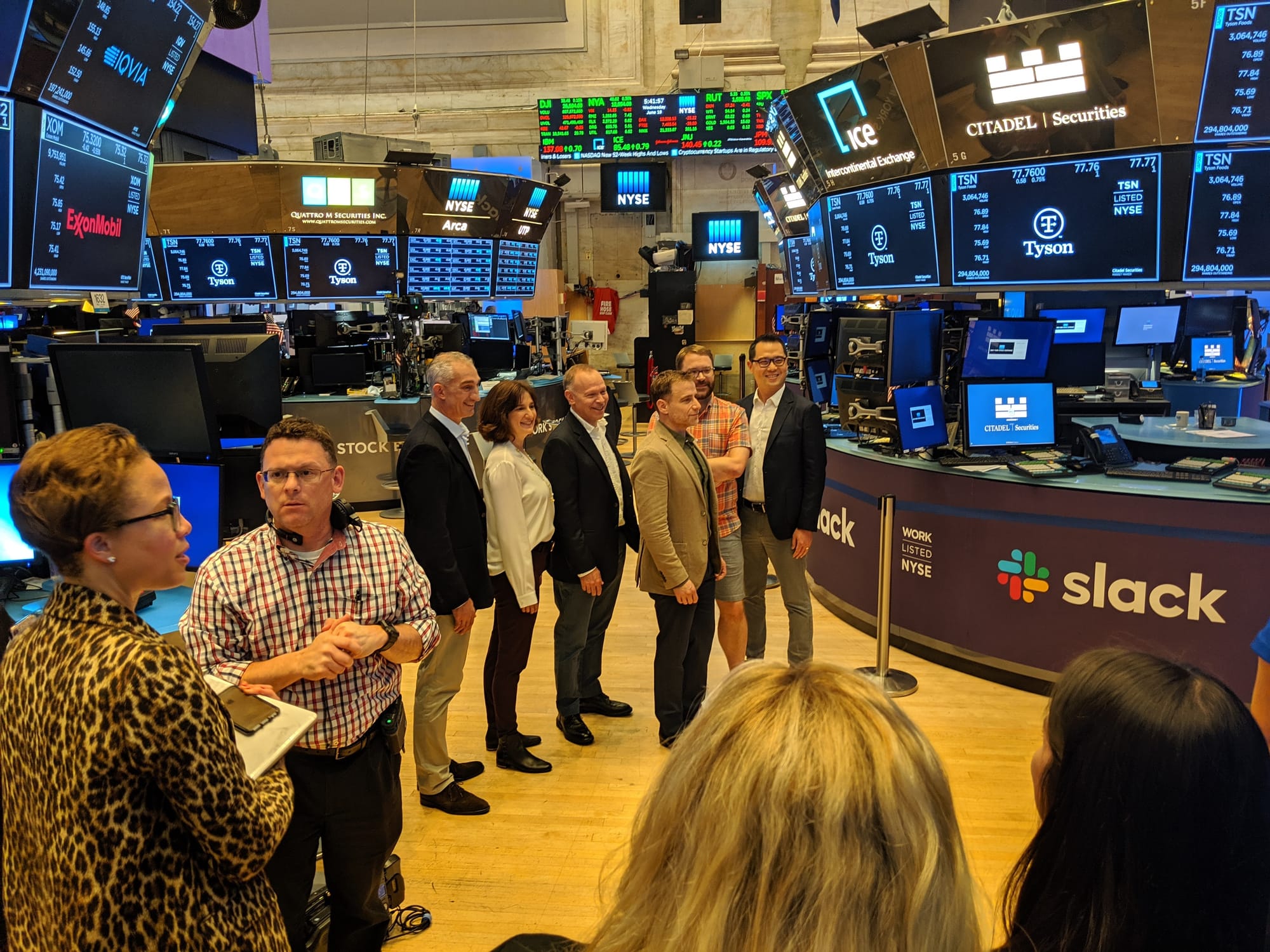
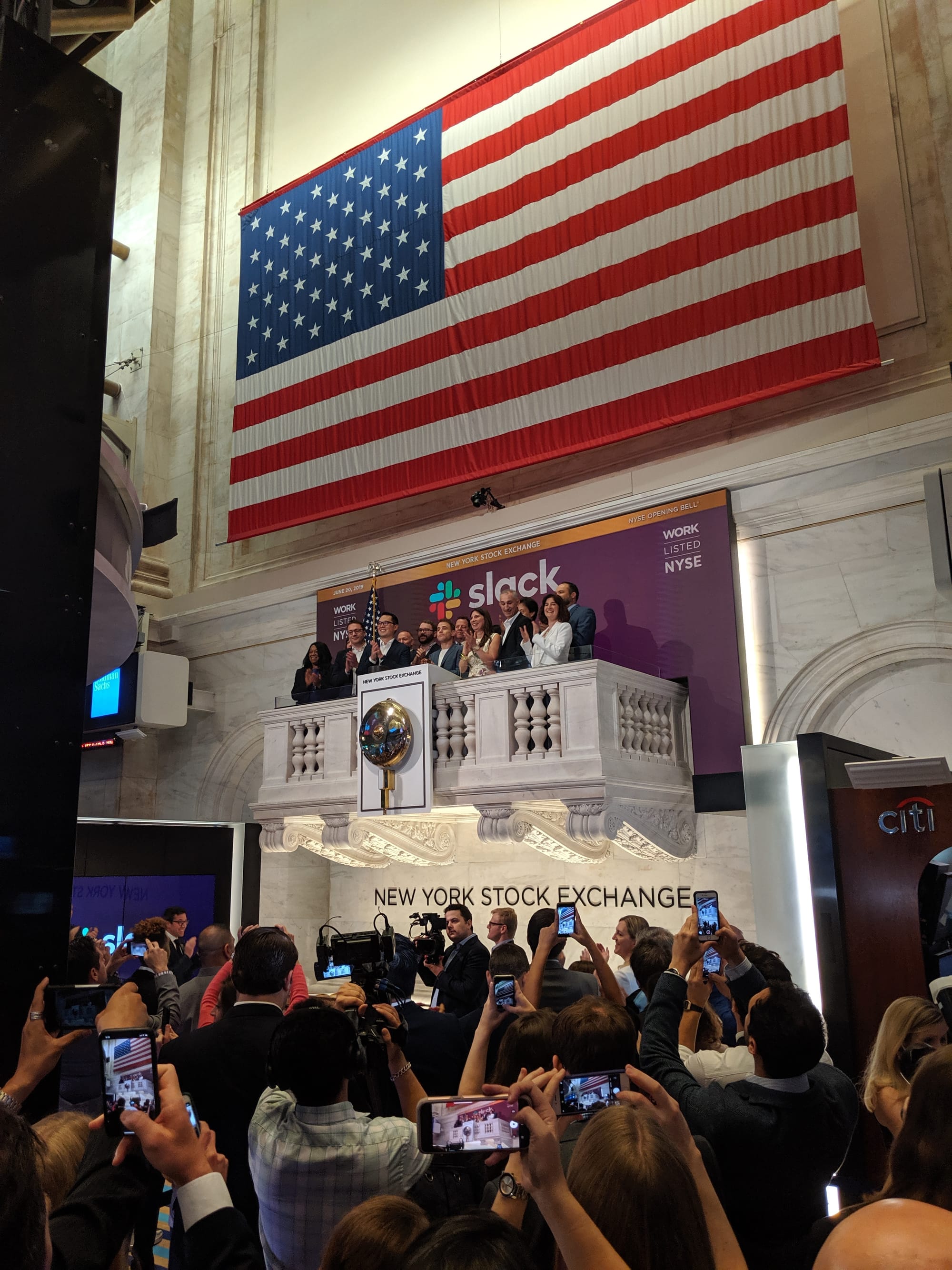
Slack executives on the stock exchange floor: Bob Frati, Tamar Yehoshua, David Schellhase, Stewart Butterfield, Cal Henderson, and Allen Shim.
A small set of early employees, company executives and board members were also in attendance. Several special guests were invited. Stewart invited his mom Norma Butterfield to celebrate the occasion. She was adorable throughout the proceedings.
We flew in Matt Slack, who has the Twitter handle @slack. Slack the company has the handle @slackhq. Matt had affably endured the many people who routinely mentioned him by accident over the years, thinking he was us. We felt he was part of the journey and deserved to be there. When else would we get a chance to meet him?
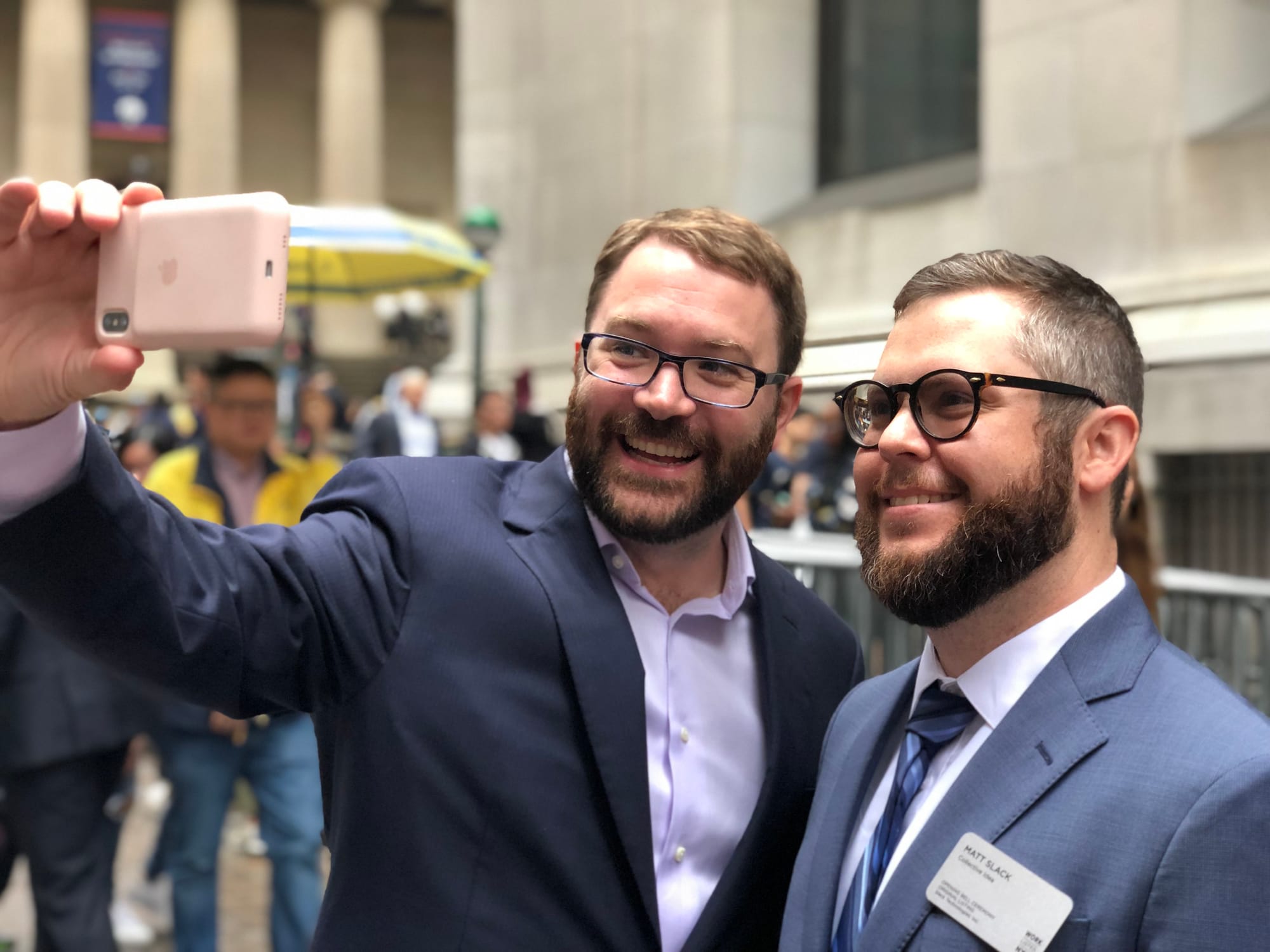
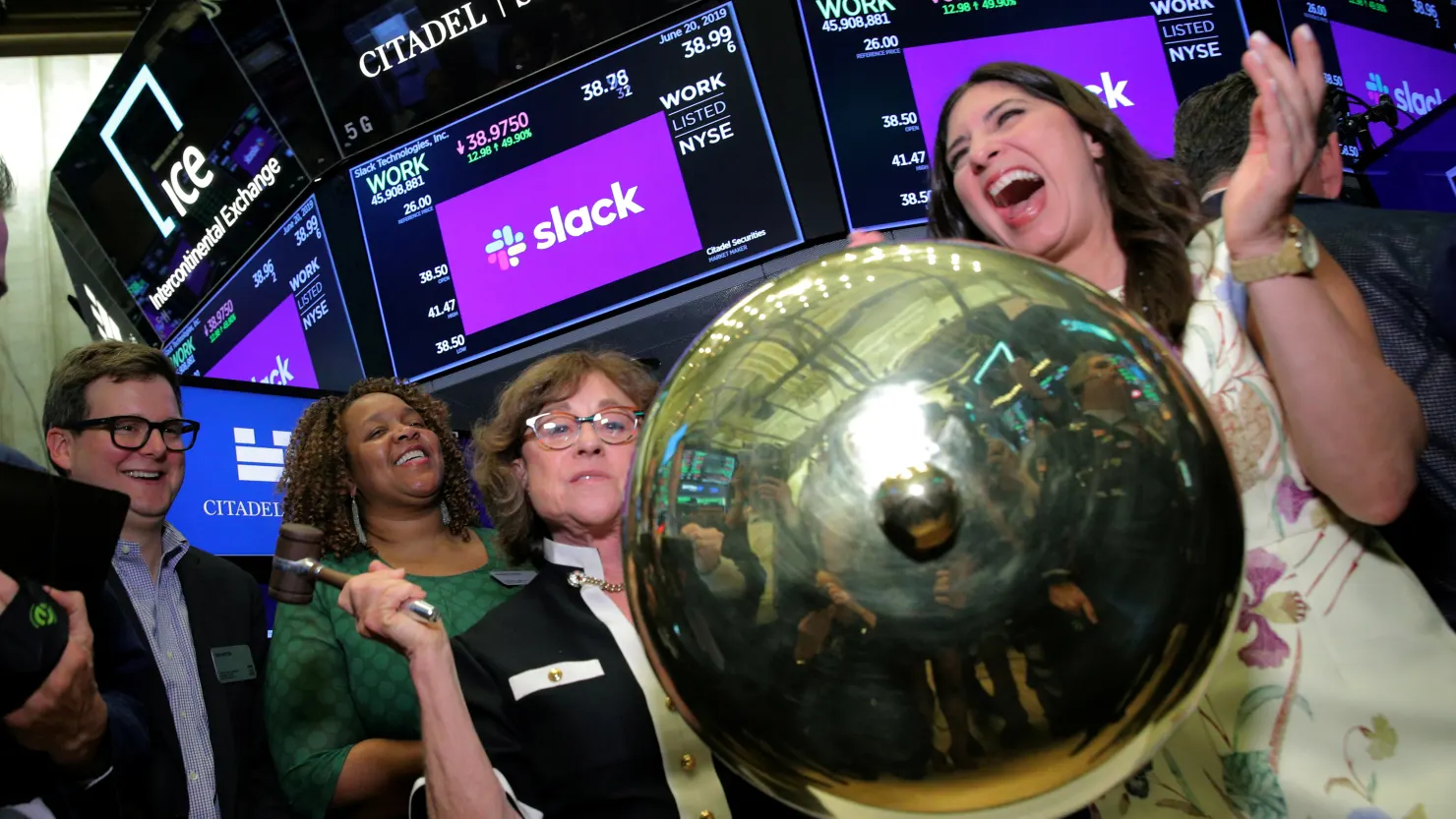
Cal with Matt Slack. Norma Butterfield ringing the bell.
After an early morning breakfast, replete with fancy food and a champagne toast, we were shepherded to the NYSE floor for the bell-ringing ceremony.
We initially filed to list under the stock ticker $SLCK, until at the last minute $WORK was suggested. It immediately stuck. $SLCK just didn’t look nice and $WORK perfectly captured our ethos.
As Stewart recalls, “I don’t remember who proposed WORK but it was pretty natural given that “Where Work Happens” was still the main tagline and relatively fresh. TEAM was cool, but Atlassian took that. We did consider a bunch of SLC, SLA, SLK, and SLCK but all of those were meh. What I really wanted was “S” which Sprint was using. The T-Mobile merger was almost complete but not quite done and in the end S didn’t become available until months after we listed.”
$WORK it was.
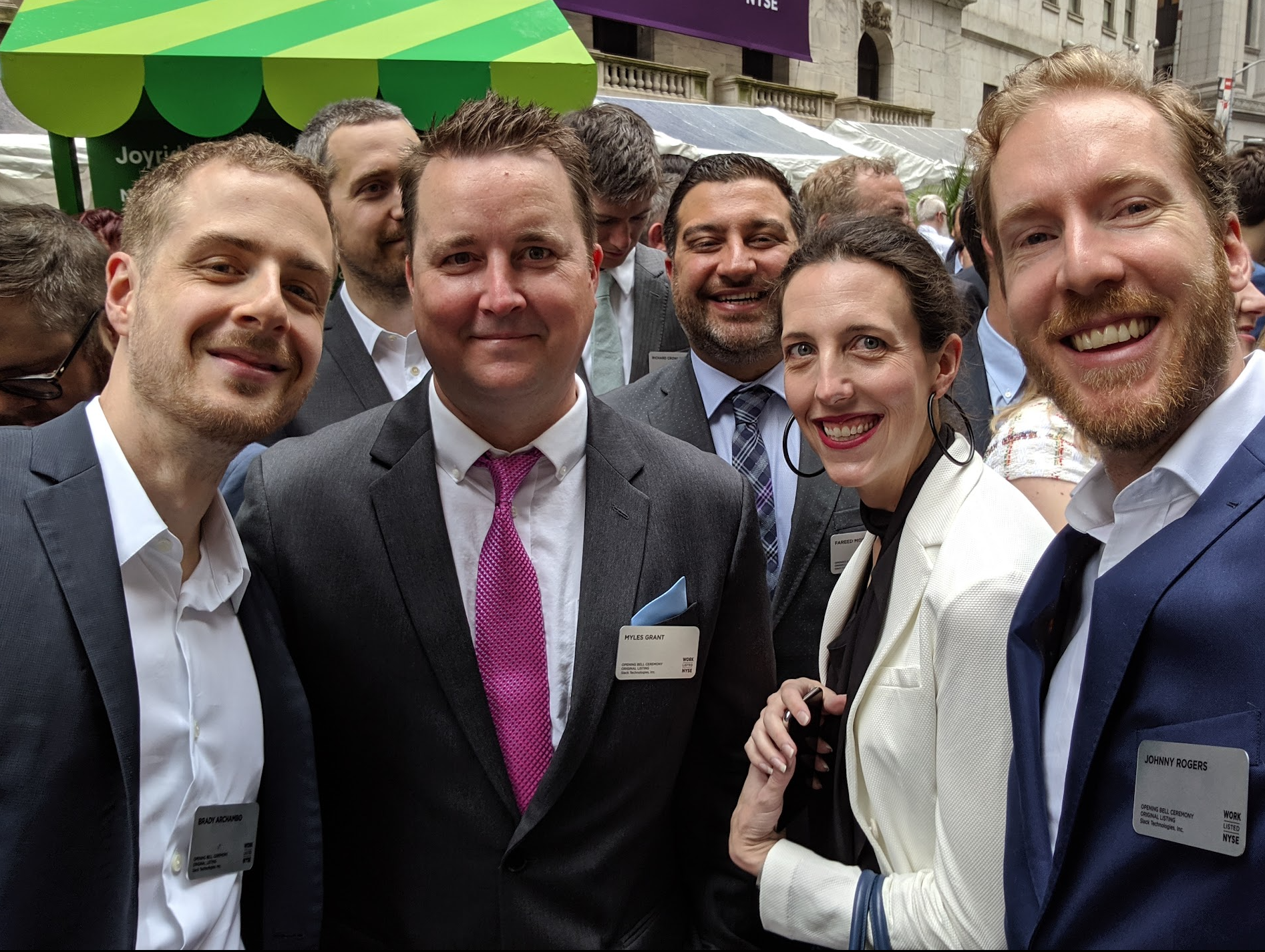
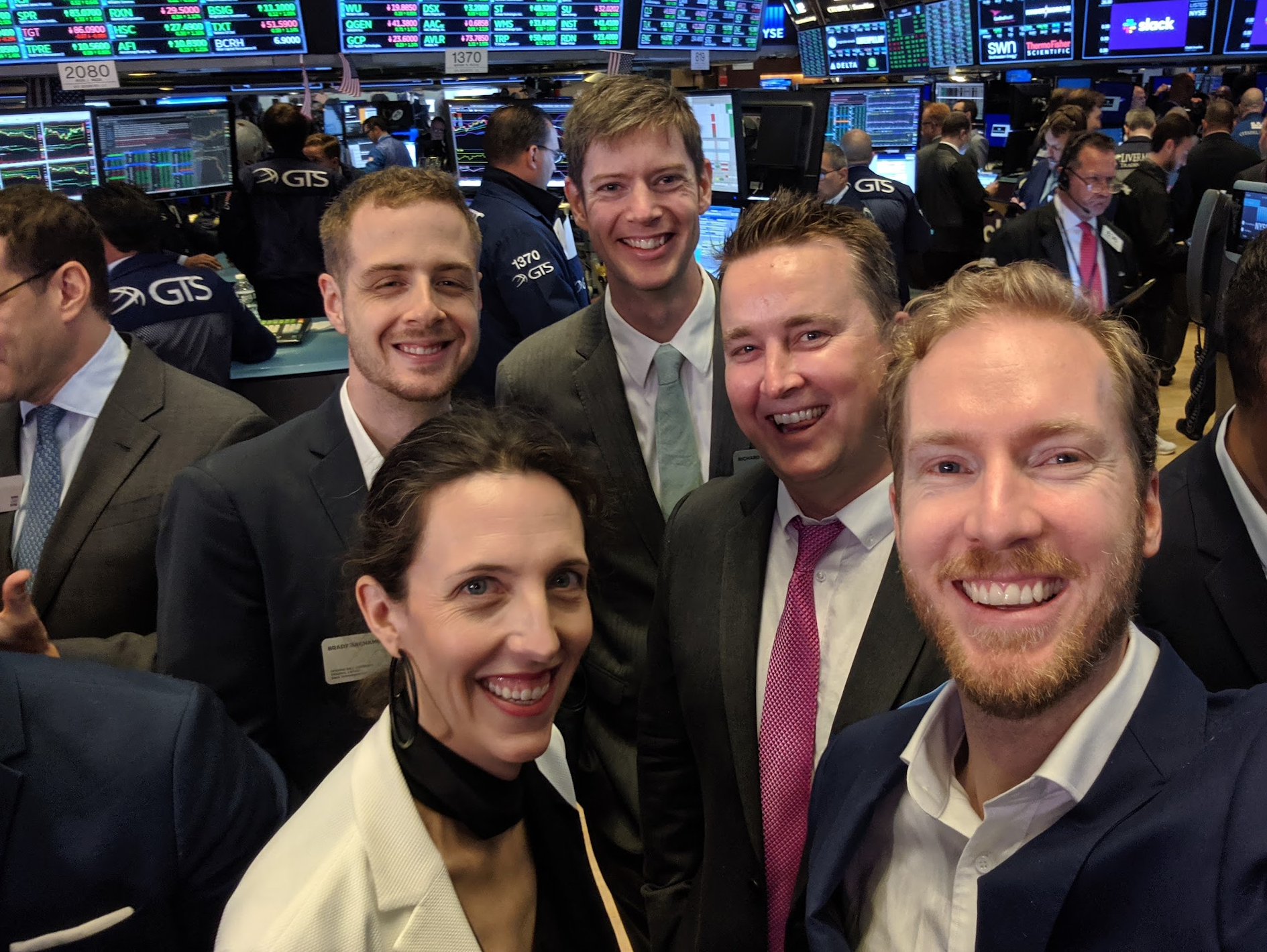
Left: Brady Archambo, Myles Grant, Ali Rayl and Johnny Rodgers (with Brandon Velestuk and Fareed Mosavat in back) in front of the stock exchange. Right: Inside the NYSE with Richard Crowley.
Direct Public Listing
One of the primary stories of interest on listing day was our choice to go the unusual route of a direct listing (DPO) rather than the standard initial public offering (IPO). We were the second tech company to do this. Spotify went public through a successful direct listing in April 2018. The financial press was eager to see a second example in action.
We did a direct listing for two reasons. First, we didn’t need to raise money. A traditional IPO is typically used as a vehicle to raise money from investors for the next stage of the company. Slack, in contrast, already had nearly $800M in cash set aside from venture investors, and didn’t need new capital investment.
Second, a direct listing enabled existing shareholders – investors and employees – to trade on day one without the dilution of issuing new stock and without a lockup period. IPOs raise funds by issuing new stock to sell, which dilutes the holdings of existing shareholders. Worse, IPOs typically lock up these “insider” traders for 6 months. This made an immense difference for employees by allowing them undiluted equity and instant liquidity when there was the most demand for the stock. It was the difference between employees helplessly watching the market for 6 months versus participating in it.
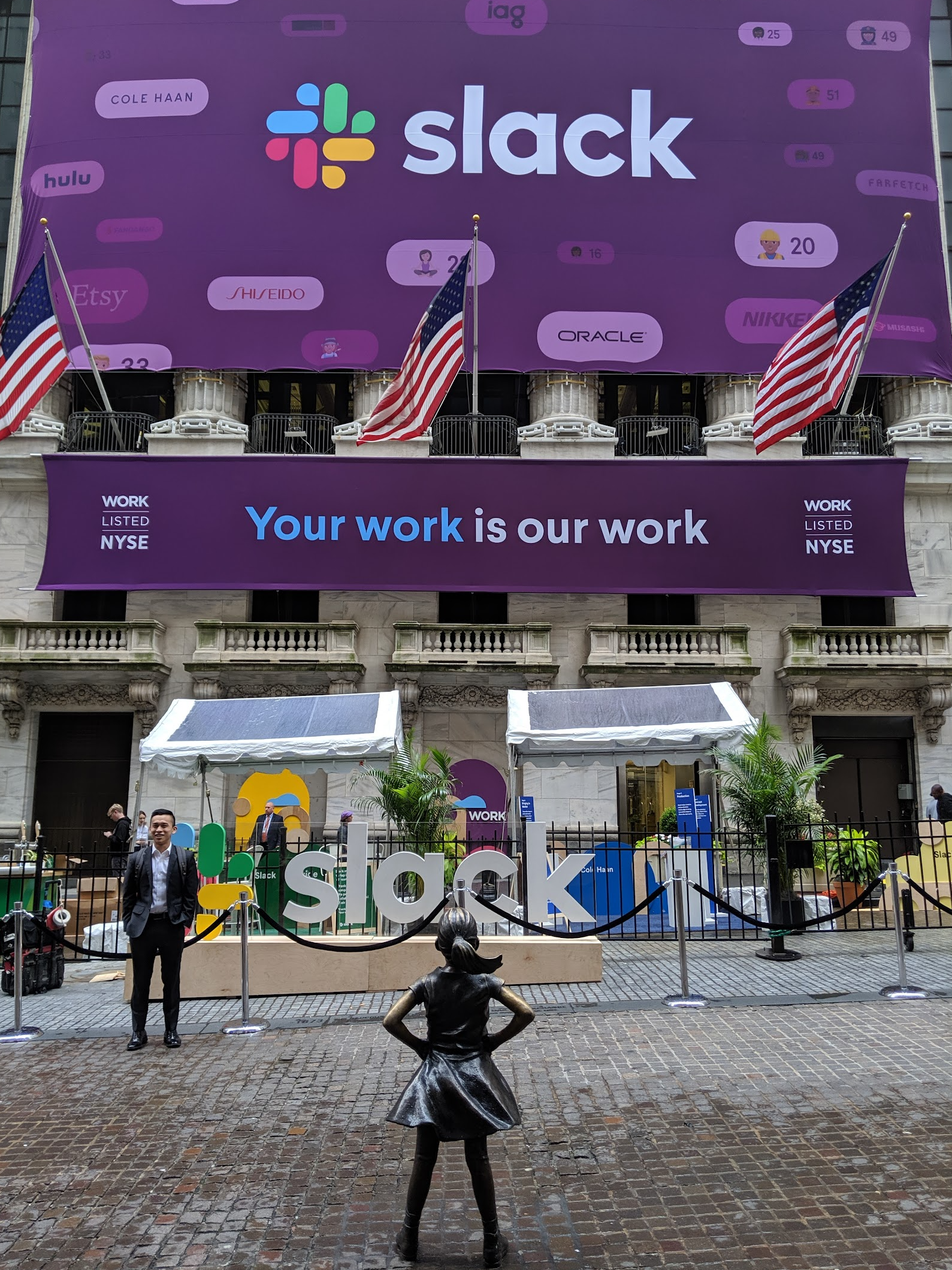
Life-changing money
At 9:30am eastern time, Stewart rang the bell and opened trading for the NYSE. Existing stocks began to trade as usual, indifferent to the excitement around Slack. But $WORK wasn’t yet trading. At the NYSE, newly listed stocks go through a price discovery process before trading begins.
While the price discovery process happened, there was a lull as those of us who attended the NYSE ceremony traveled back to the office in NoHo. We gathered in a small meeting room with our spreadsheets, newsfeeds, and eTrade open on our laptops. We nervously gossiped and joked about what was about to happen.
For early employees, this long-awaited moment was a watershed. The equity we had earned in Slack was, on paper, worth far more than any of us had ever had. Life-changing money. For many other employees who joined later, the scale of the equity was more modest but still enough to make a serious positive financial impact on their lives.
Outside the meeting room we’d camped out in, no one was working. Many were similarly focused on their laptops and the paper money that was about to convert into actual dollars. Others just enjoyed the celebration and excitement of it all.
On the day before the listing, the reference price for Slack was set at $26 per share. This was an estimate based on anticipated supply and demand on the first day of trading. However, interest began to amp up over the hours leading up to trading. Our assigned market maker, Citadel Securities, updated the price as orders came in and demand increased.
We collectively watched the price climb, first by a few dollars, then $10, eventually settling at $38.50. Our stock price went up by 48% before it even opened. At 11am, trading began. The stock rapidly shot up to a peak of $42 over the first half hour before levelling out.
According to Stewart and Allen, 700 employees made $1M or more from their equity. This number would eventually climb to over 1000 people by 2021 as shares were fully vested by employees hired in 2016-2017. Stewart became a billionaire. Several execs' net worth climbed into 8 figures.
Our investors saw huge returns on their investment. Accel, which famously kept their money in the company when we stopped making Glitch, saw their stake climb to $4.62B. a16z's was worth $2.56B.
The pivot, the rounds of investment, the strategic partnerships, the decision to do a direct listing – all had paid off.
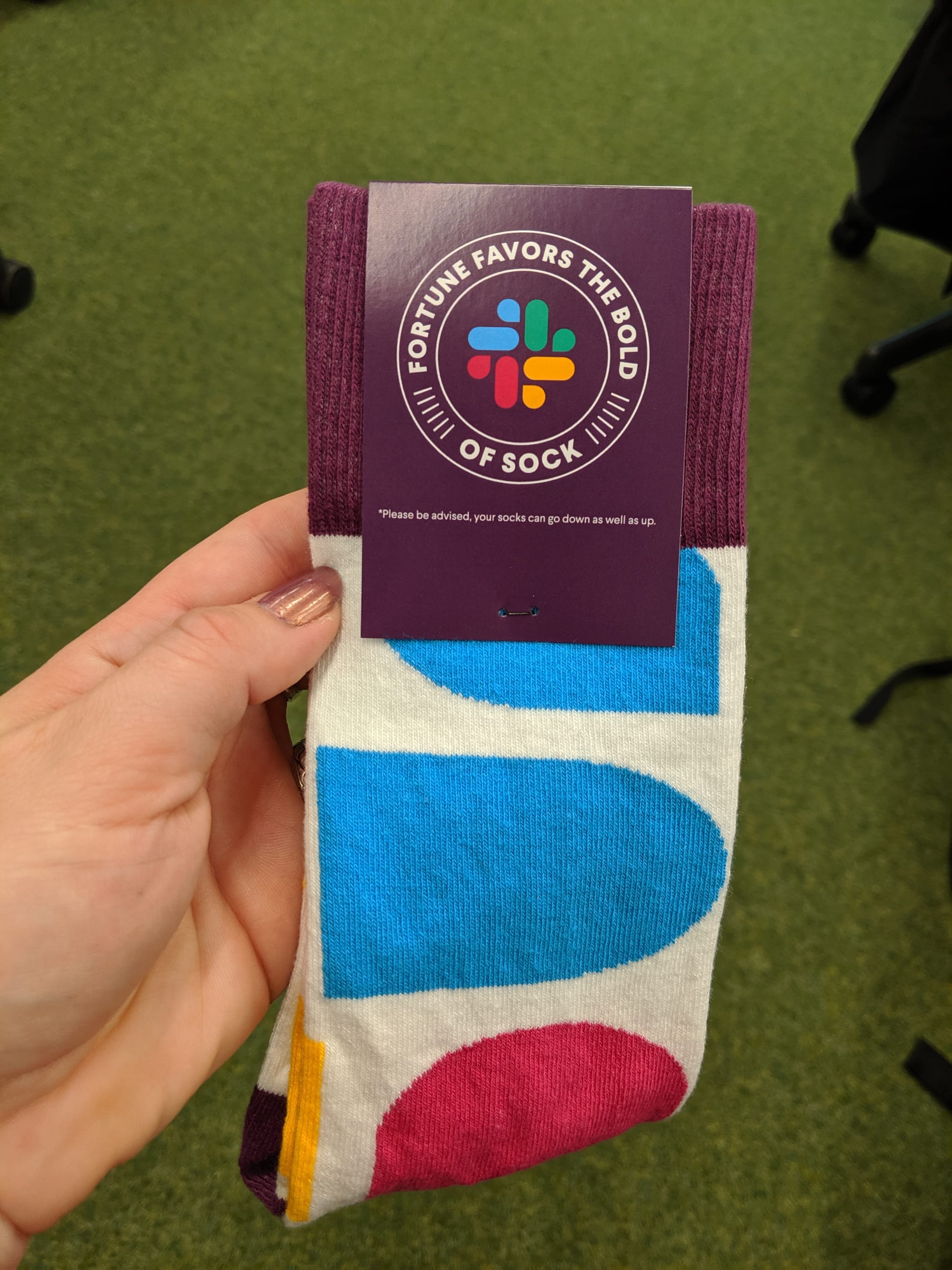
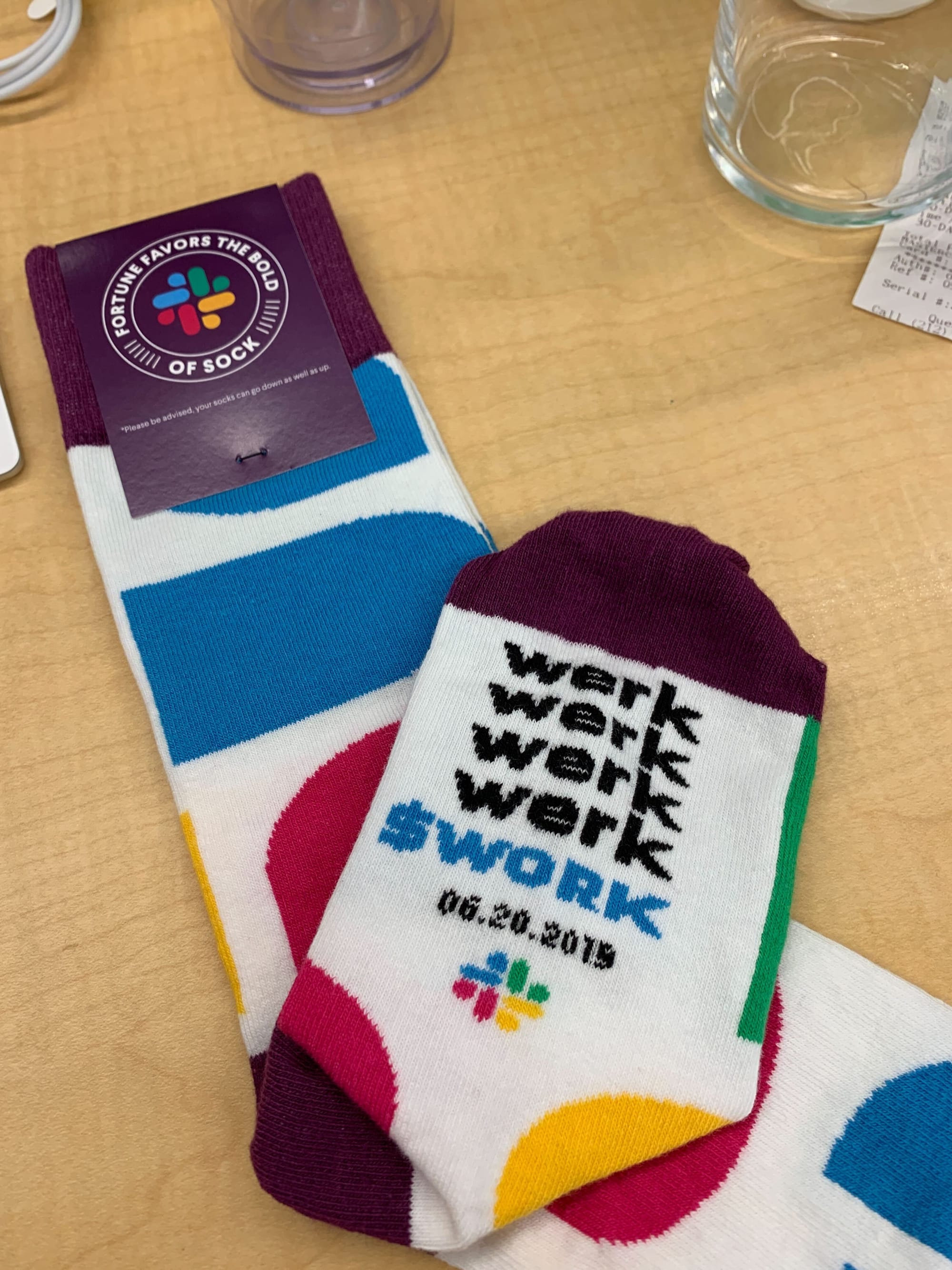
Slack stock socks. Thanks Riri.
Everyone at the company received a pair of Slack $WORK socks, continuing the line of Slack swag dating back to our first plaid socks. They noted, wisely:
Please be advised, your socks can go down as well as up.
By the end of the day, $WORK was priced at $38.62. This valued Slack at $19.5 billion dollars. That sounds like a big number. It is. But it’s hard to conceptualize big numbers in a world where millions, billions and – increasingly – trillion dollar figures are thrown around in news articles as if they’re just a little bigger than one another.
In Cal Henderson’s quarterly engineering reports, he’d often use weird real-world conversions to help people understand the magnitude of what we were doing. Let me give it a try:
If you stacked up 19,500,000,000 Macbook Pros at a height of 1.68cm each, they would be 327,600 kilometres tall. The average distance from the earth to the moon is 384,400km. The laptops would reach 85% of the way from the surface of the earth to the moon… stacked flat.

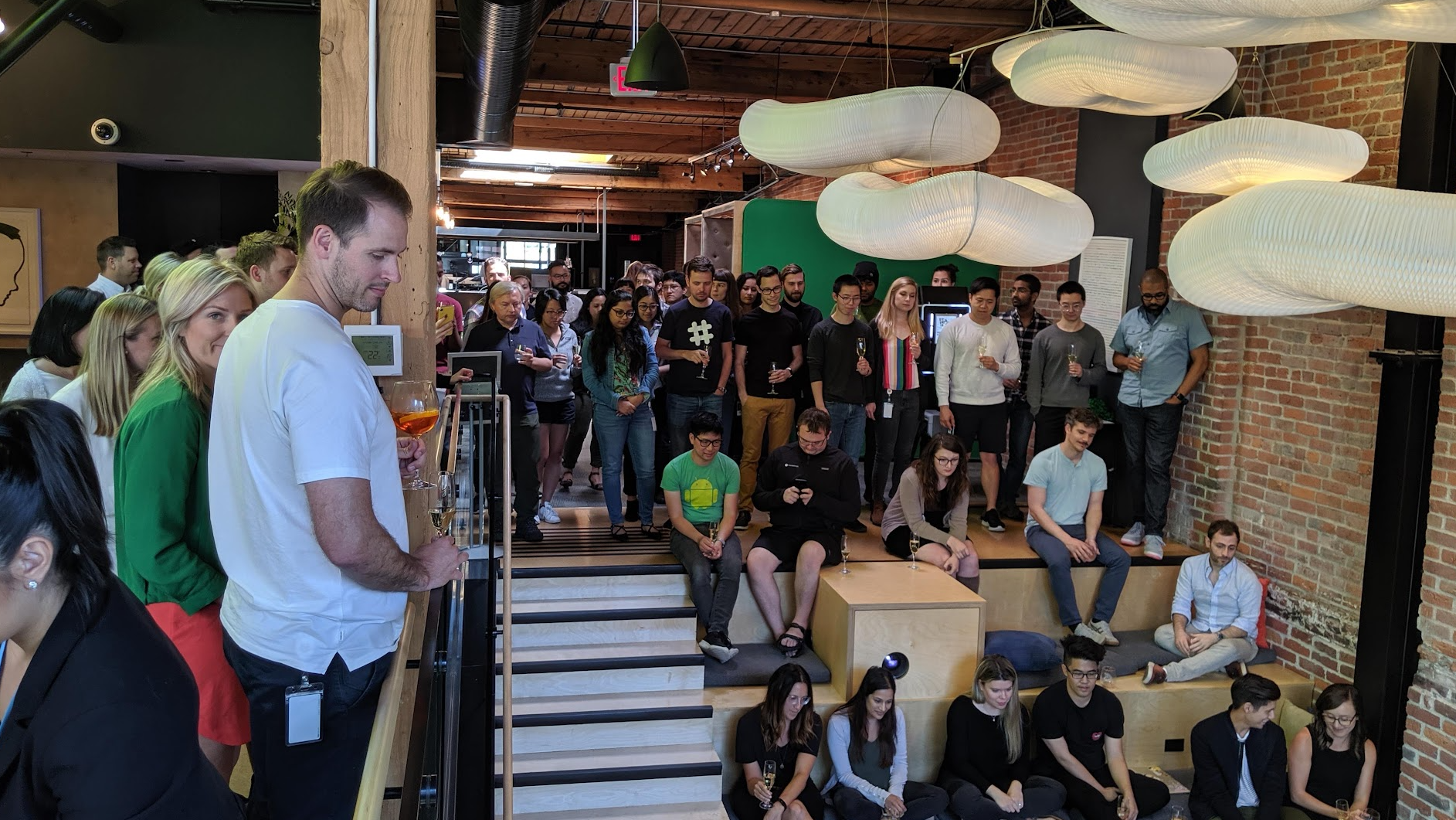

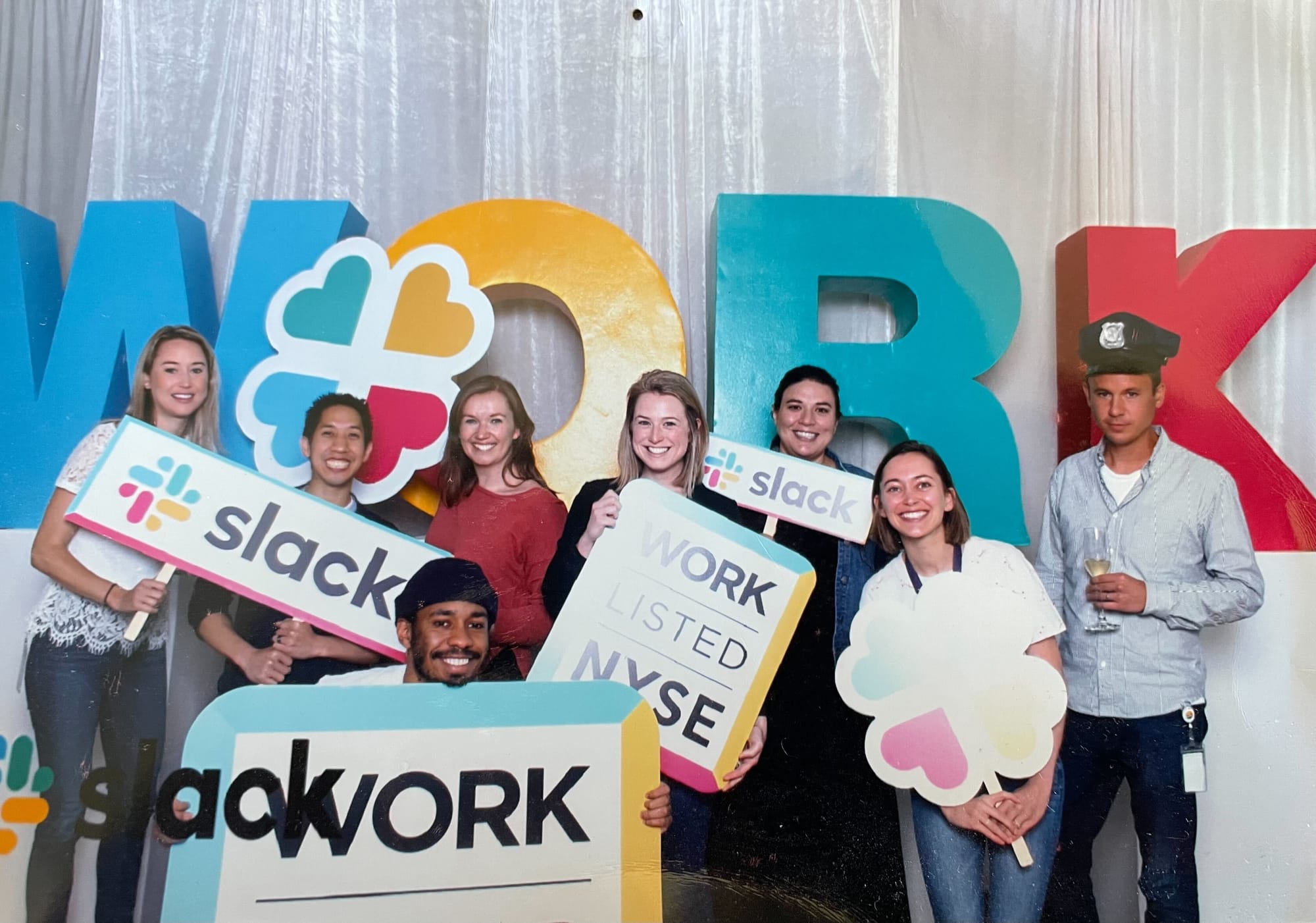
Celebrations at Slack's offices around the world on listing day.
Celebrating around the world
Watch parties were arranged at Slack’s offices around the world. This meant early risers in San Francisco and Vancouver could enjoy the bell-ringing at 6:30am pacific time, Tokyo and Melbourne in the middle of the night, and a civilized mid-afternoon in Dublin and London. Wherever staff happened to find themselves, they were treated to a party: champagne, donuts, photo booths, tokens of appreciation and mementos to take home. It was a company snow day.
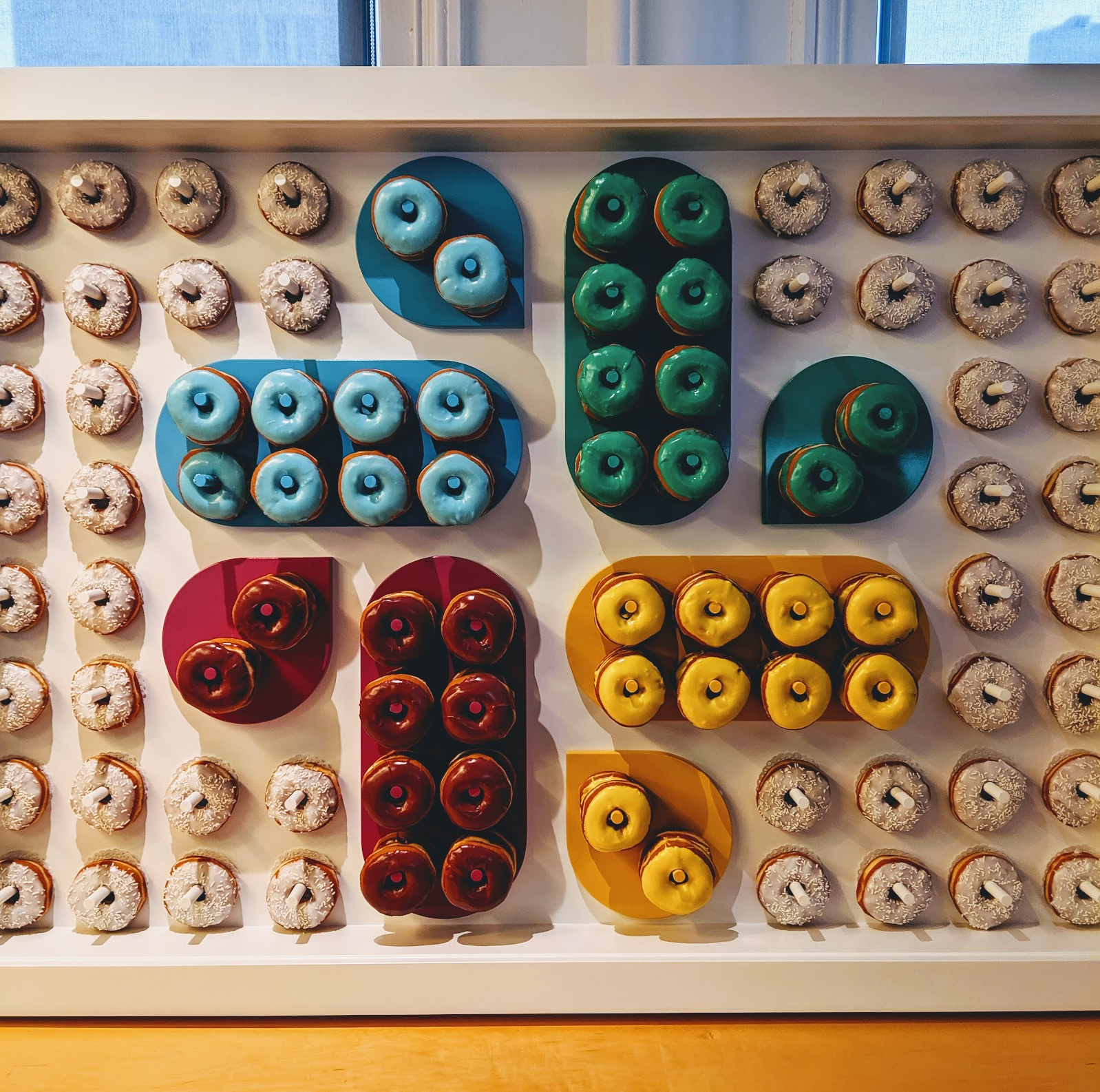
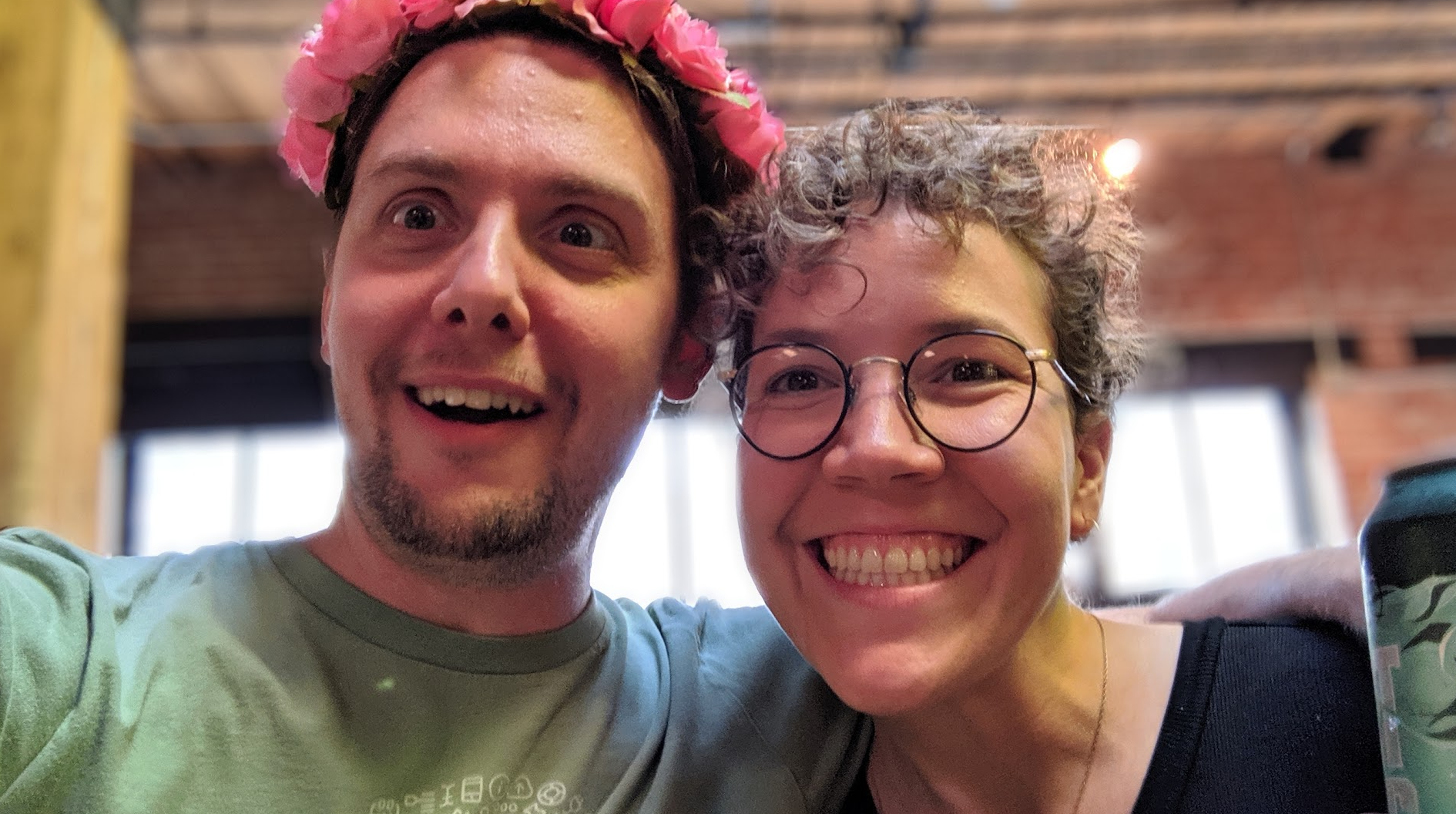


Top right: Hubert Florin and Jaime Delanghe. Bottom right: photo collage from Alyssa Ioannou and the Denver team.
Stewart and Cal arranged for a plane to take them and the other execs from New York to San Francisco for the party on the west coast, where the majority of employees resided. From Stewart:
“Had to get up at 5am ET for a CNBC interview before going to the NYSE and ringing the bell. We did another interview or two after and then went right to Teterboro where two small planes had been chartered to take everyone back to SF. The whole way to the airport we were on the phone with the bankers trying to see where the price would land. I think we took off by like 11am ET and got to the HQ office around 2pm PT. Did 5 hours of hanging around with people and then Jen and I got Chipotle on the way back to my apartment where we crashed super hard.”
Stewart did not confirm whether he paid extra for guacamole on his burrito.
Reaching the mountaintop
While putting together this post, we asked former Slack employees what going public meant to them. We have been trying to tell the business and technology story of how Slack reached this point and the culture story of what this moment signified for the company. But there are also thousands of personal stories, and this seems like an opportune moment to share a small slice of them.
Bryan Stern
I remember grabbing a pic with Stewart at the SF office in the afternoon that day. He and Cal looked absolutely exhausted, but it really struck me that on this huge day they made sure to make it all the way back across the country to see the "little guys".
Andrew Rich
I'd left Slack a year or so before. Selling the shares after the DPO was the difference between "keeping up with bills but not making any headway" and "solid base to build on." It wasn't enough to retire on but it moved me significantly in that direction. I could step up my charitable giving (PHSSPCA) and really make a plan for the future. I'm incredibly grateful.
Nate Palmore
My first day was the day that we announced the DPO, which honestly was pretty awesome. Also the actual day of the DPO I will never forget the number of people I saw shopping for boats, houses, and even someone pricing out a plane lol.
Rob Levine
When I joined the team in March 2016, I had hopes it would prove to be my last regular employment. The success of the DPO with our subsequent growth and success made for the perfect capper to my nearly four decade-long recruiting career in the Bay Area. And I was able to wrap up my work at Slack on its last day as an independent company. I’m forever grateful to have been part of such a terrific endeavor.
Finn Ellis
We watched the livestream of the opening bell at dawn in San Francisco. I didn't expect how produced it was, like a red carpet, TV captions naming important people. I remember the whole room losing our minds when they introduced Matt Slack – our hero of Twitter, who had for years been graciously replying to disgruntled users mistakenly tagging @slack, despite never working with us. And they invited him to New York! We finally got to see his face, and how absurd he clearly also thought it was to be there.
Shelley Trask
It was a life-changing moment for me (even though I still can't retire like right now 😂) but it meant I will have the financial freedom to choose what I do, when I retire, how I live without worrying about every penny.
I'd not been part of much of the prep leading up to this pivotal moment and recall feeling a bit sad that I didn't get to learn about exec roadshows and all the incredible amount of work that it took to get us to DPO. I then was both surprised and delighted when Cal asked me if I wanted to visit the NYSE to be there for this event. I couldn't believe it!
The Slack employees in SF were overjoyed. The mood was elevated and joyful. The day we'd all worked so hard for had finally arrived! Some people never had to work again, which was bonkers. Some of us, myself included, had been part of previous startups, none of which had gone public or made any real equity for employees, but Slack was different.
Mark Pike
The legal crew in SF went to St Francis Fountain for pancakes to celebrate. Then it was back to work.
Chapman Swaine
I was on a customer call when the ticker hit $42 and I remember hearing cheering in the YVR office and seeing my phone blasting alerts while needing to stay composed and focused. I also remember cracking a bottle of bourbon that had been sitting on my desk for a year (thanks Isuru Withanage) at 6am. I don't drink anymore but still have the whisky. That was a wild morning, afternoon, evening, and morning in YVR 🥳
I also remember the realization that going public wasn't the end of the race - it was the start of it.
Thank you to everyone who contributed photos and stories for this post. Thanks to Stewart for sharing anecdotes.
